Crew 186 Sol 4 Summary Report 04JAN2018
Sol 4
Summary Title: The Moons of Mars and the Greens of Earth
Author’s name: Max Fagin
Mission Status: All nominal
Sol Activity Summary: Geologically, Earth’s moon has very little in common with Mars. The geological processes that have shaped the surface of our Moon (vulcanism and impacts) are very different than the geological processes that have shaped the surface of Mars (water and wind). But sitting in an intriguing middle ground are Mars’ moons, Phobos and Deimos. By most metrics, Mars’ moons are fairly typical asteroids, but their proximity to Mars has caused their surfaces to become blanketed in Martian material kicked up by asteroid strikes and swept up by the moons as they snowplow through the space surrounding the planet. As three members of our crew have done thesis level work on how hard it is to land on Mars, we are acutely aware that the first Mars sample return mission may not sample Mars at all, but rather, the impact debris that Mars has deposited onto its moons. In this theme, today a team composed of Cesare, Melanie, Sam and Mark conducted an EVA to the region 5 km North West of the Hab known as “The Moons” (Yellow Moon, Beige Moon, Gray Moon and White Moon). Last night, Cesare gave the entire crew a seminar on the geology of the surrounding area so we could be on the lookout for interesting features on geology EVAs like this one.
We had originally budgeted time for three stops in the region for spectral measurements and sample collection, but the process of strapping the expensive and delicate equipment to our ATVs meant our estimates were incorrect, and we reached our turnaround time after only sampling one. So we must add this site to the increasingly long list of sites that will get a follow-up in a later EVA. Far more science to be done than scientists to do it will be part of a real mission to Mars, but it doesn’t make that constraint any easier to accept!
When the EVA team returned, they were greeted by the sight of the NorCal Mars Society rover wheeling out to meet their ATVs. The rover was successfully navigated for three complete circuits of the campus while the team was out. The ideal Mars exploration mission will utilize robotic resources of every kind (orbital, airborne, and surface) and it’s good to have at least one of those joining our mission.
This evening, Mark took us on a tour of GreenHab where the microgreens he planted 2 days ago are already starting to sprout. Flowers from GreenHab already adorn our dinner table, and near the end of our mission, we expect GreenHab’s food will too.
Look Ahead Plan: In an attempt to check off our science goals more rapidly, tomorrow’s EVA will be a hybrid geology and navigation EVA along the southern end of Cow Dung Rd. The geology team will explore sites south of kissing camel ridge, and drop off the navigation team to attempt a walk back under limited visibility conditions with the navigation beacon.
Anomalies in work: ATV 300 wouldn’t start this morning. We tried starting it again after returning from EVA, after it had been sitting in the sun for 2 hours, and it started up as expected. It was probably just too cold.
Weather: 0C, Winds Calm, Visibility 10 miles, Barometer 30.30 inHg
Crew Physical Status: Healthy
EVA: The Moons, 2.5 hours, geological sampling and spectra of clays in the region
Reports to be filed: Sol Summary, Operations Report, GreenHab Report, Science Report (Geology), Journalist Report w. Photo of the Day, EVA Report,EVA Request
Support Requested: We are exceeding our maximum daily water consumption target of 40 gal/sol as GreenHab operations ramp up, and are implementing tighter controls on water use to allow GreenHab as much water as possible. We are considering implementing a “3 bin” dishwashing system, any other recommendations on effective water saving strategies would be welcome.


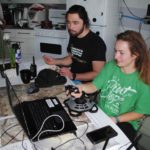

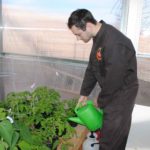
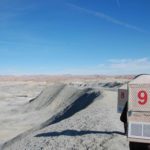
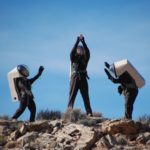
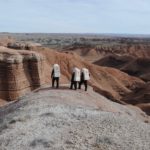
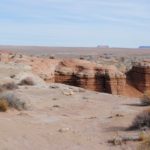
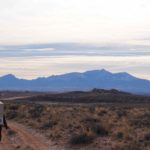
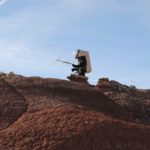
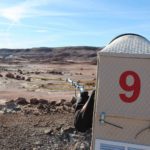
You must be logged in to post a comment.